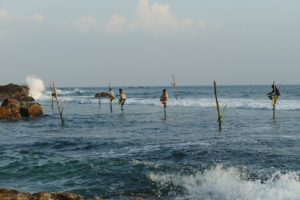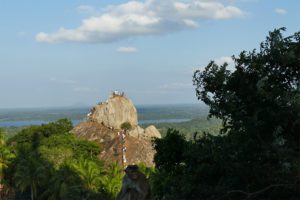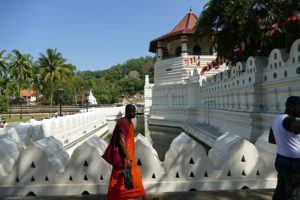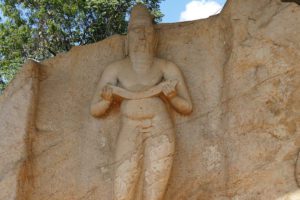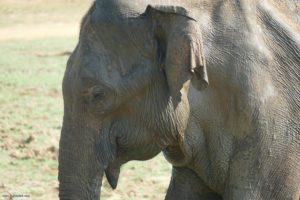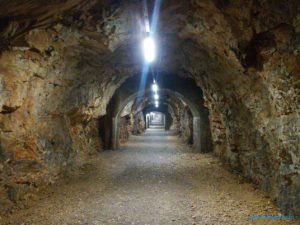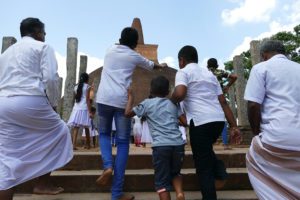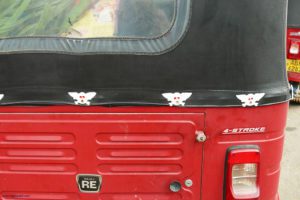Let me guide you to Nuwara Eliya and Haputale in Sri Lanka’s Highlands, an earthly Garden Eden where the world-famous Ceylon Tea is growing.
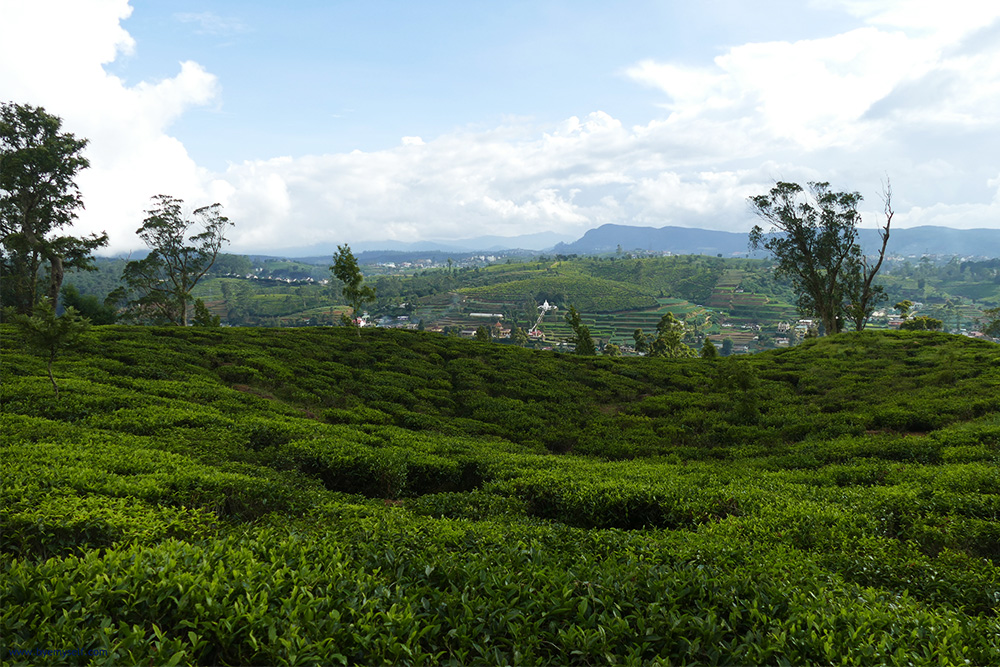
While I was soaking in the dreamy landscape around Nuwara Eliya, the rolling hills covered with tea bushes, the skies opened and within minutes, everything was….soaked.
Baby, It’s Cold Outside…
When travelling, you can plan and organize basically everything. Everything but the weather.
Although my landlady meant well, the info that for two weeks there hadn’t been one drop of rain wasn’t of that much comfort.
For a short moment, I was even thinking about leaving one day earlier – but my landlady had washed all of my clothes.
Everything felt damp, even things that I had kept in my suitcase.
The humidity was crawling into each and every corner of the house.
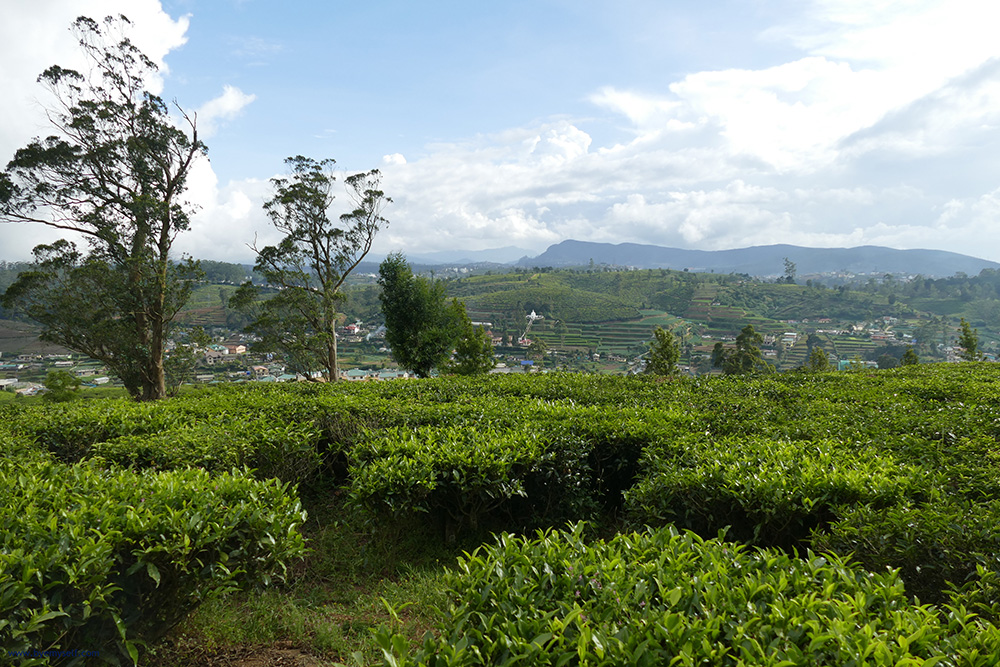
Plus, the fantastic surroundings are inviting you to go out of town – to experience some unexpected adventures.
So the next day, while there still was a light drizzle here and there, I was able to leave the house and decided to go on a trip to the even higher highlands, namely to the town of Haputale.
This trip turned out to be far more exciting than expected.
A Day Trip By Public Bus
I wrote in a former post about my ambivalent relationship with bus drivers, aka the Kings of the Road.
Well, the one taking us from Nureliya to Haputale was definitely one of the most ruthless representatives of all the drivers in the world.
We were going through the highlands. To be clear: a mountainous region. There were bends and very narrow curves. Which he enjoyed taking with the highest speed – I kid you not, the bus was actually leaning to the sides like a motorcycle. I’m not sure if we didn’t go on only two wheels from time to time. People were literally sliding from the benches, catching their fall in the very last moment.
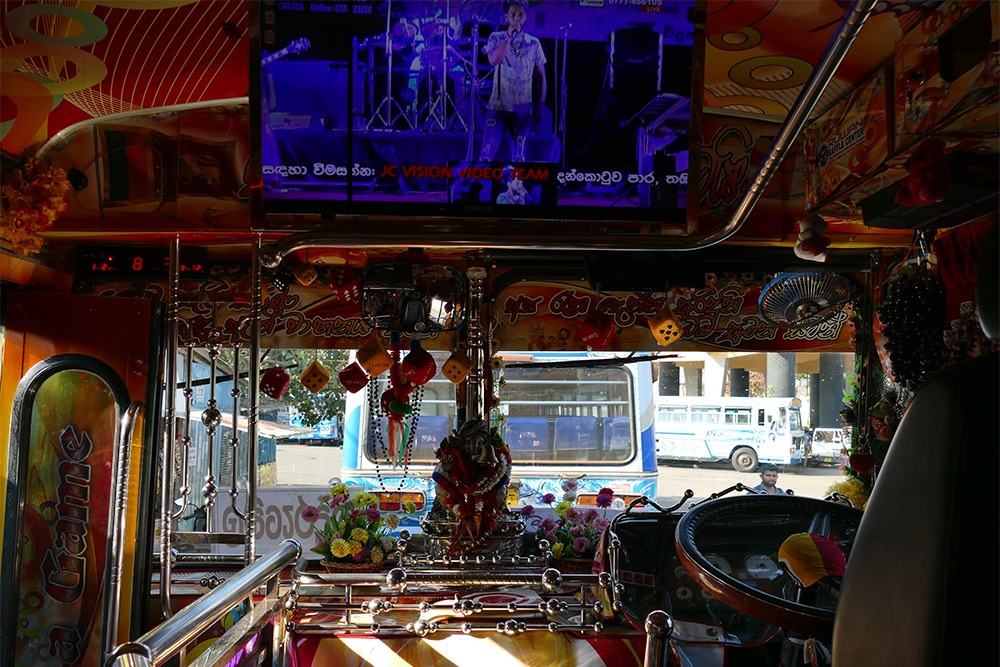
The King didn’t care. He honked the horn and overtook three lorries in one go. Only another bus, frontally approaching us with a similar speed, forced him back into the correct lane.
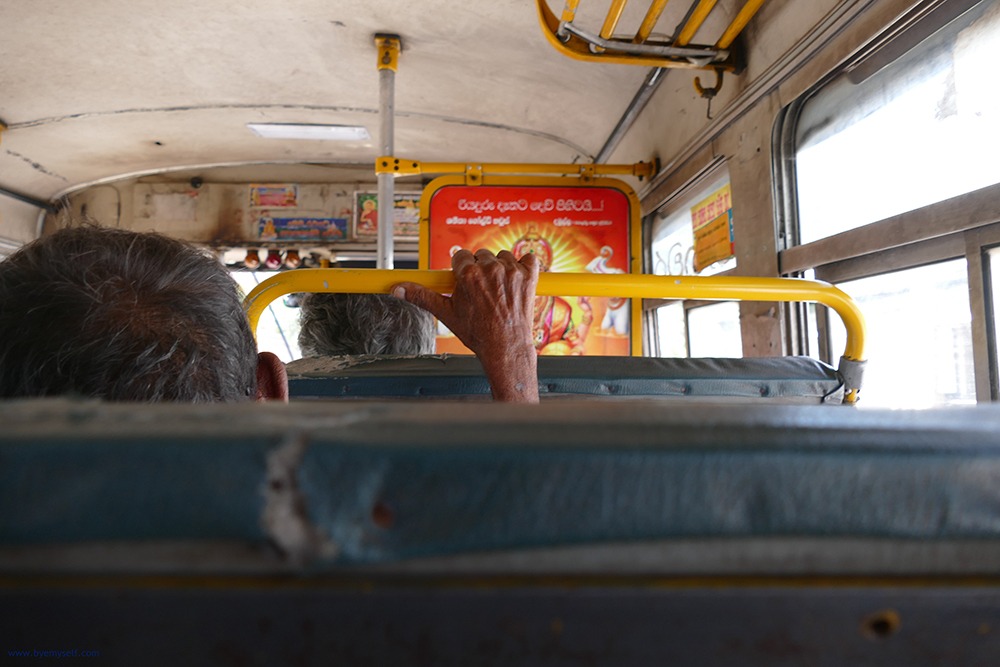
All The King’s Men
In Sri Lanka, the Kings of the Road actually come with an entourage: There are always two to three guys standing in the permanently open front door, assisting his majesty.
In the early morning, before the first tour, they burn some joss sticks in front of the little Buddha on the dashboard and replace yesterday’s flowers by fresh ones.
Then, they turn the music on to the max – don’t bother to bring your own music and your headphones, you’ll have no chance, anyway.
But actually, theirs is a pretty nice soundtrack, accentuating the beautiful and exotic scenarios you witness from your passenger’s seat.
Once the entourage has finished the preparation, the King takes place.
This King is wearing flip-flops.
Immediately, I’m thinking of Sheldon Cooper saying to Penny I don’t want to be another flip-flop fatality.
Well, neither do I, but I assume that the King didn’t see this particular episode and I doubt that he would be very open to my sensible footwear suggestions.
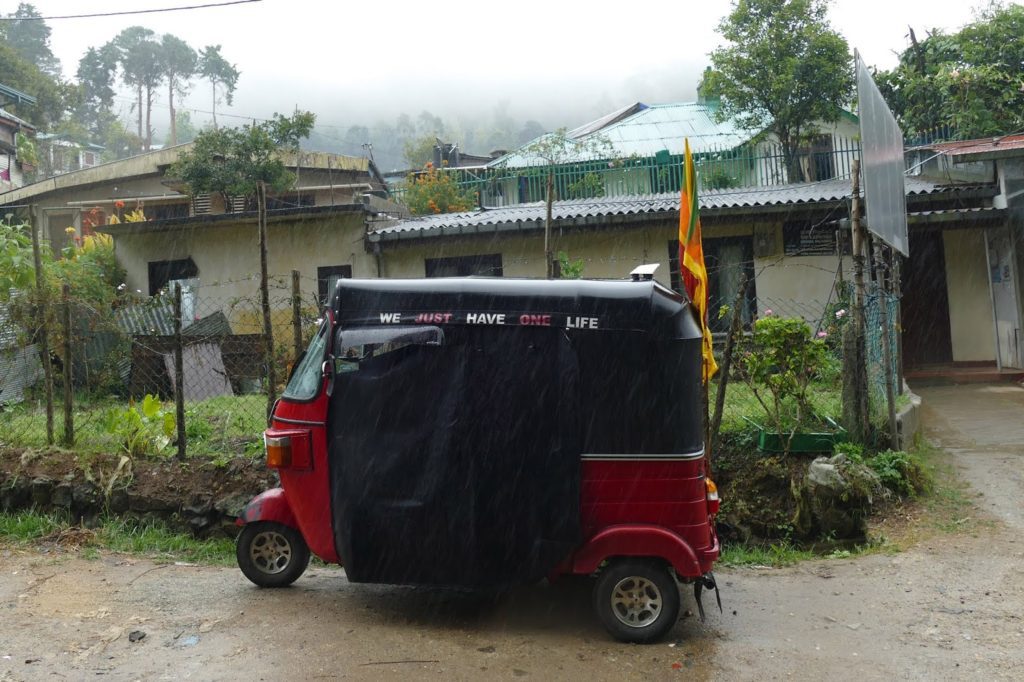
The entourage collects money from the passengers. Then they hand the King some water and little treats made from some white powder rolled into a betel nut leave that my landlady claims is not a drug but a tradition.
Heavy Load
At the next stop, a gentleman manhandles huge bags full of vegetables to one of the King’s flunkeys. The underling arranges them around the King’s seat.
But don’t you think they are careless – no, safety first, they actually tie the bags with pieces of rope to the grid surrounding the driver’s seat.
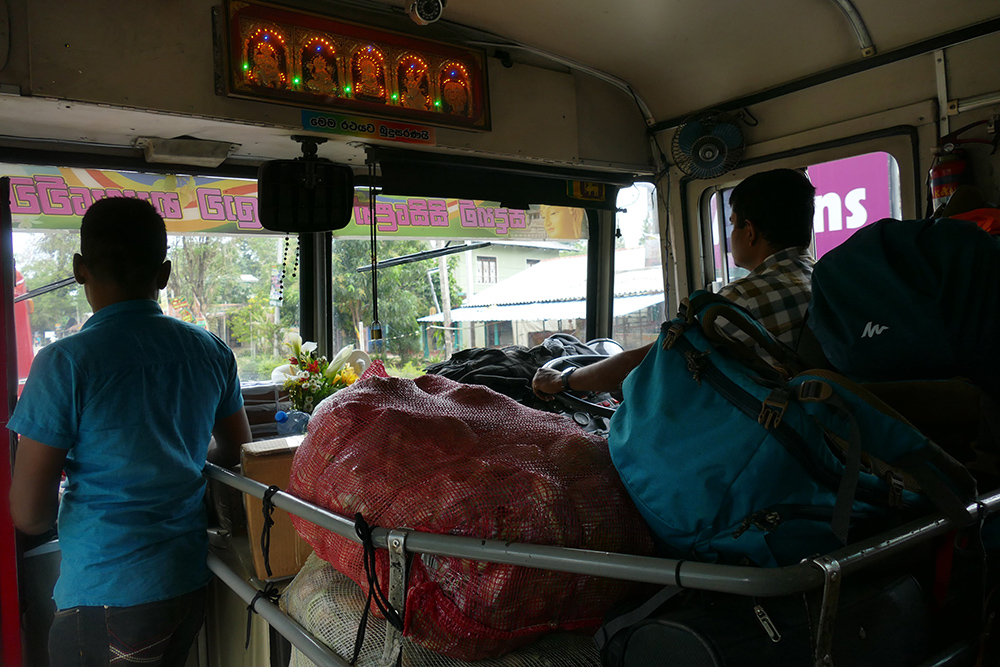
The gentleman himself is not joining us.
Before we take off, he hands the guy a big bundle of leeks that the young man places on the rack on top of me.
The leek leaks.
Some drops of water and a tiny bug fall on my bare leg.
With Help From Above
As we pass a Hindu temple, one of the helpers takes off his woolen hat, steps down, donates some coins and asks for a blessing. Back on the bus, he puts his hat back on and the King accelerates even more – since after this procedure, we should be good.
Just to be sure, the helper gets also off at a Buddhist shrine and pleads for mercy here, too.
A couple of villages further, another gentleman hands the King through the open window some very interesting looking goods: It’s bowls made of clay, covered with some paper lid.
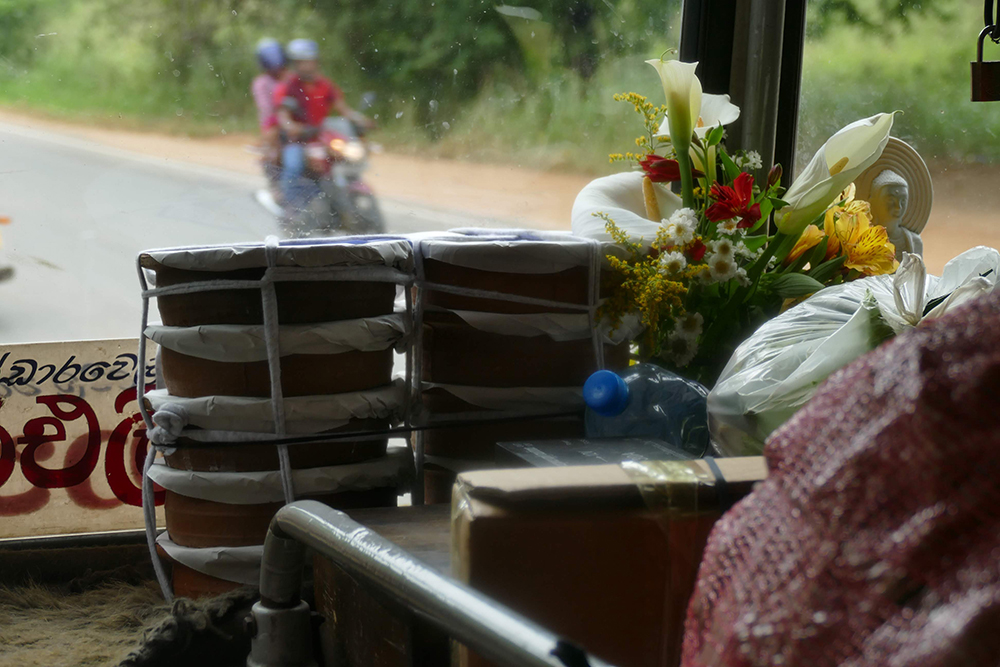
The gentleman keeps handing the King neatly tied towers of bowls and he forwards them with a certain disdain to the helper who stores them thoroughly under the first rows of seats.
As he’s done, we wave bye bye to the gentleman and off we go.
There are many small stands on both sides of the road with the same clay bowls – and the signs next to them advertise for Curd.
Uh-huh.
Lesson Learned
You see, taking the bus in Sri Lanka is not only getting from A to B.
It’s learning new tricks.
It’s watching marvelous scenarios.
It’s riding a roller coaster.
And it’s also a bit looking death in the eye.
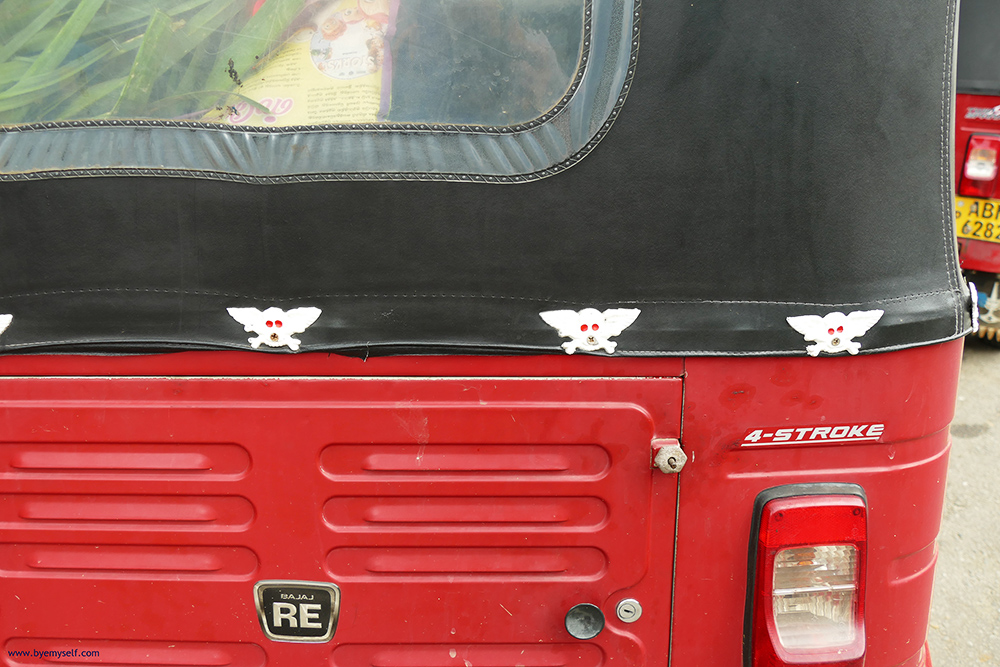
I understood perfectly well why the Italian father, pressing his little daughter tight to his chest, whispered with relief to his wife that held a toddler Ancora nove chilometri – Only nine kilometers left.
Hence, to get back to Nuwara Eliya after a nice snack and about a thousand pictures of the breathtaking sceneries around Haputale, I opted for the train.
Sri Lanka is famous for scenic train routes. So the coaches tend to be permanently sold out which doesn’t hold the trains company back from selling further tickets to everyone who asks for them.
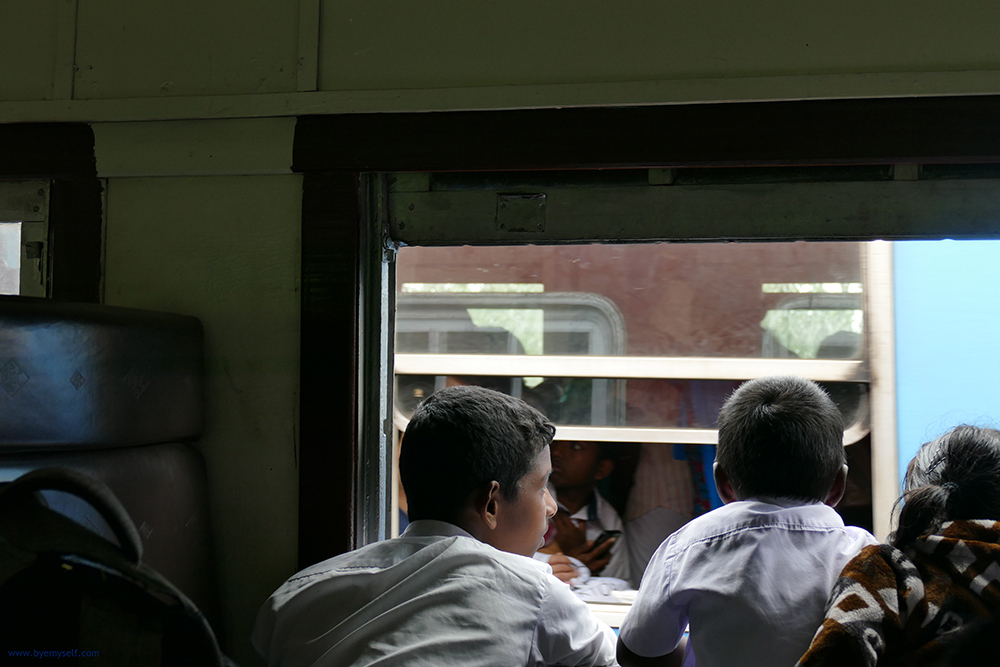
Therefore, those trains are packed to the rim. It must be a quite unpleasant experience, so if you want to ride on a Sri Lankan train for the joy and some pictures, going from Haputale to Nureliya does the trick.
Colonial Past
In Asia, each of the colonial powers – be it the British or the French – installed a refuge for themselves in the highlands. There, they found a milder, cooler climate and fertile soil to grow for instance tea.
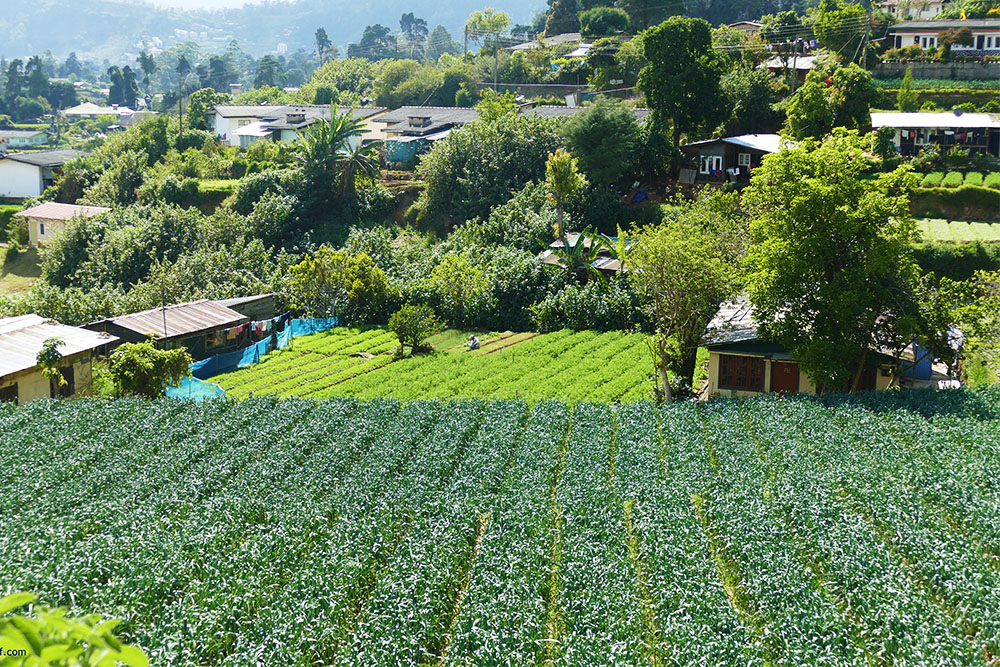
In Sri Lanka, this place is Nuwara Eliya – and you really cannot blame the British that they fell in love with this earthly Garden Eden.
Just like there is Da Lat in Viet Nam where the old buildings have a dash of French architecture or the Cameron Highlands in Malaysia where they grow all sort of vegetables, to Asians exotic fruits like strawberries and tea, in Sri Lanka, the British were seeking refuge from the tropical heat in the higher regions – for instance in Nuwara Eliya, or short Nureliya.
Nuwara Eliya
Nuwara Eliya – aka Nureliya – was founded in 1846 by Samuel Baker for British civil servants and planters.
It has been called Little England for a reason. On my way from the train station in Nanu Oya to Nuwara Eliya, I had to stop the tuk-tuk to take my warm windbreaker from my suitcase – I was actually freezing!
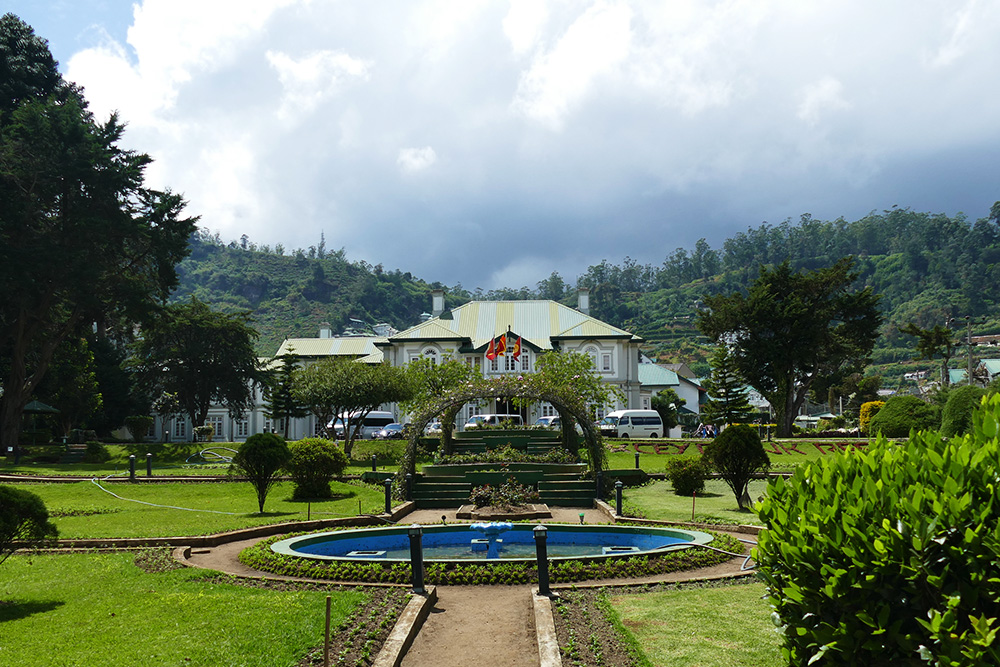
The British left an architecture somewhere between the Black Forest and the English countryside. Until these days, there is a golf course as well as a horse racecourse.
Most importantly, these colonialists planted what made Ceylon famous and them – and only them – rich: Tea.
I’ve seen the tea plantations in the Malaysian Highlands – and let me tell you, they are nothing compared to the endless rolling hills covered with green in all shades they have in Sri Lanka. The low-growing bushes look like a soft carpet from afar; and this carpet doesn’t seem to end. Sri Lanka is the world’s third-largest tea-producing country, after all.
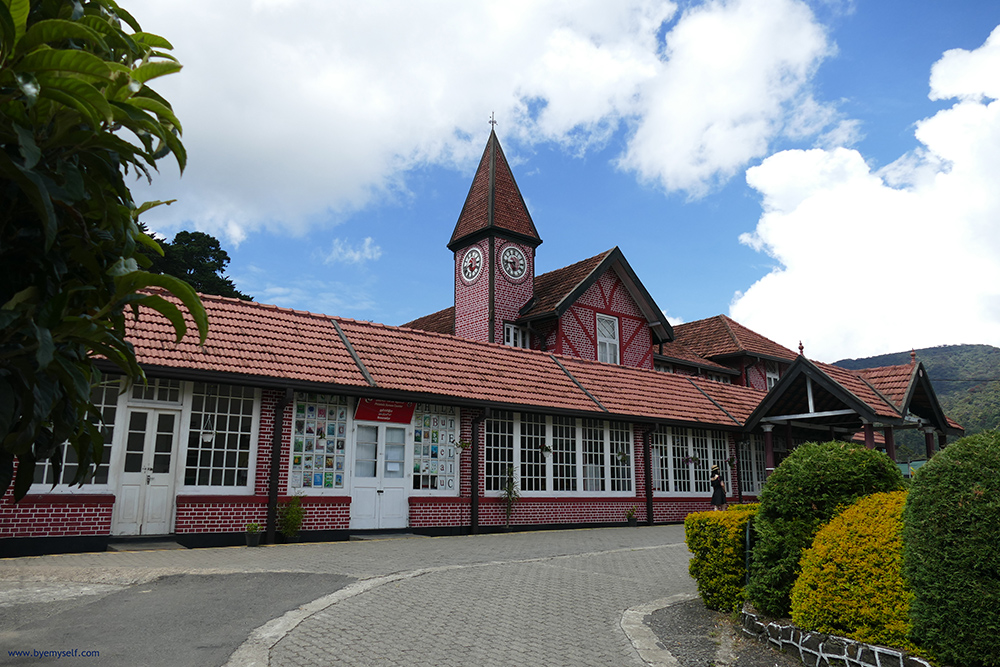
Besides admiring the colonial buildings such as the Queen’s Cottage, General’s House, Grand Hotel, Hill Club, St Andrew’s Hotel and Town Post Office, there are many nice places to visit such as the centrally located Victoria Park or Lake Gregory.
Take A Hike
But Nuwara Eliya’s strongest feature, of course, are the environs – like Galway’s Land National Park, Glen Falls, or Single Tree Hill.
To the east, not far from the town center, is the Pedro Tea Factory, of course, surrounded by endless tea plantations.
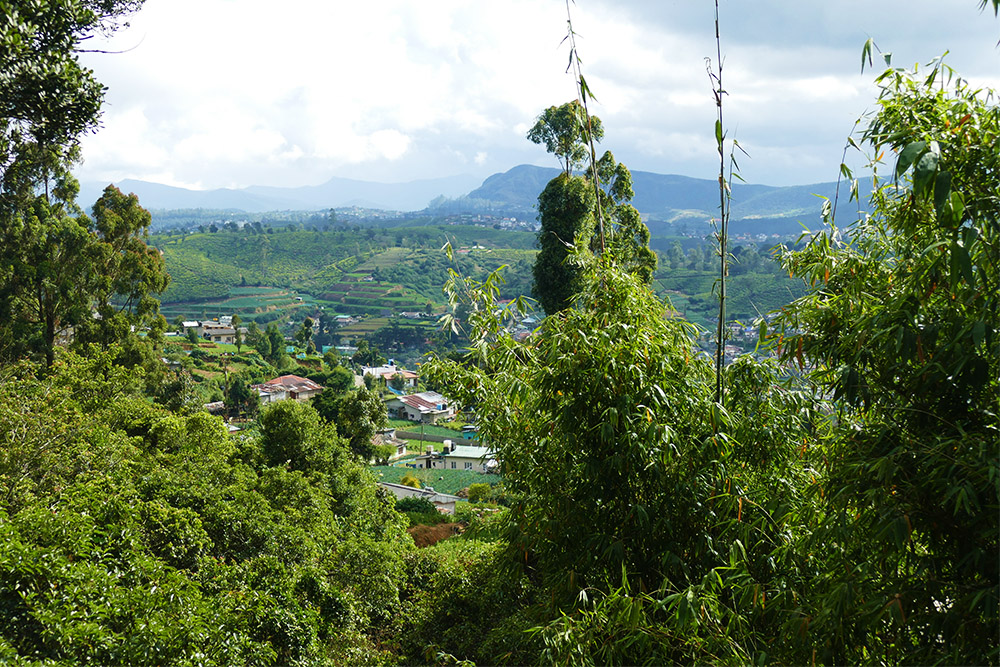
From here, you can hike – and climb – up to the Lover’s Leap waterfall. Legend has it that lovers have leaped to their deaths from this waterfall.
Since I did not choose the trail from Pedro’s but went up a trail close to the hospital to then climb up some huge slippery rocks, I totally see how the leap thing happened.
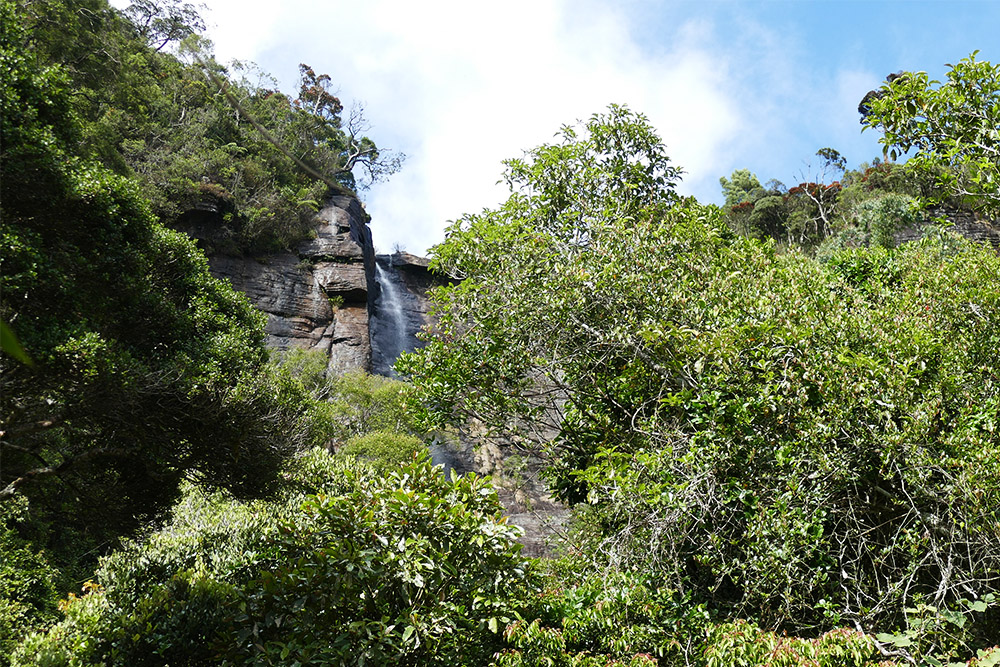
Spoiler alert: I didn’t make it up there.
Once I hit the trail everybody else takes, it didn’t get easier. There are parts where the steep trail is basically dust – and only dust. So while climbing and crawling uphill is still ok, coming back down, you are sliding.
Since I was by myself, I did not dare to do the last bit – which turned out to be good for a couple of minutes after I turned, it started to rain.
Seems like the British did also bring their climate with them.
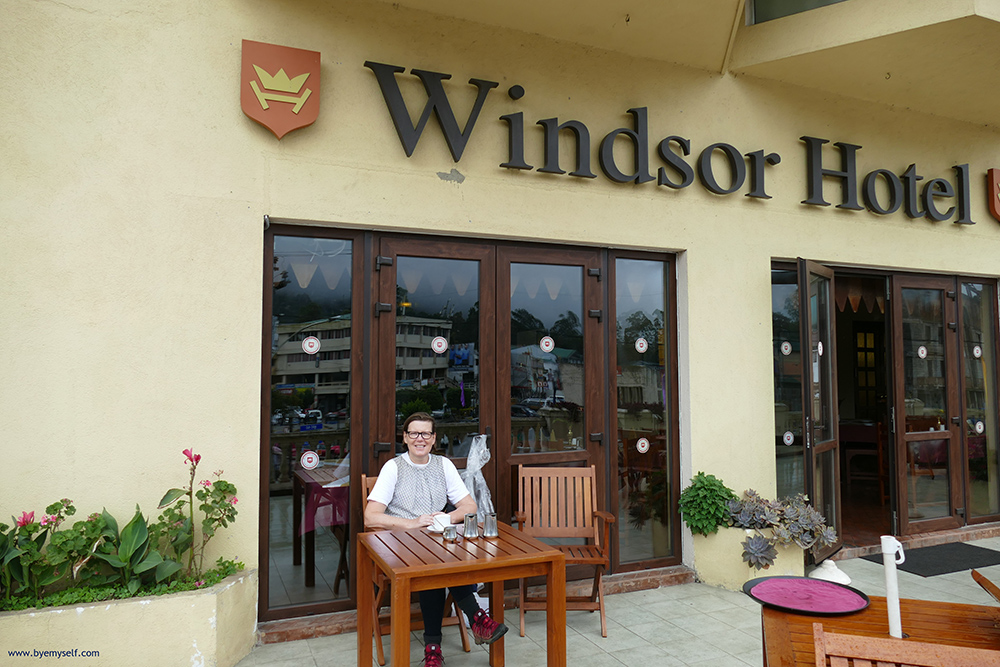
Actually, while I was in Nuwara Eliya, it rained almost all the time. Therefore I did not do my grand hike to World’s End as planned.
Haputale
Instead, I took the bus to Haputale.
CNN named Haputale one of Asia’s most overlooked destinations in 2010 – and since then, obviously, little changed.
Albeit it’s totally worth a visit if only for the amazing views of hills covered with cloud forests and tea plantations.
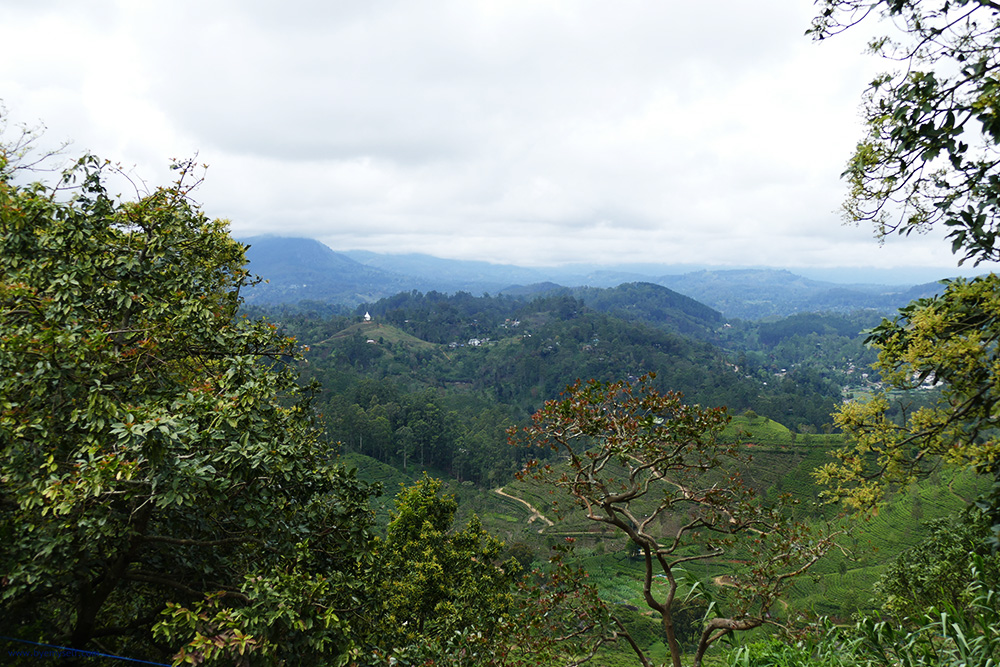
There is the Dambetenna tea plantation that can be visited in Haputale – just like the Labookelle tea factory in Nuwara Eliya. But since I’ve already visited tea factories in Malaysia twice, I was rather interested in the beautiful fields than in the processing.
World’s Most Famous
But actually, Haputale has been the cradle of the famous Lipton Tea. Scottish Sir Thomas Lipton bought tea fields in 1890 – and the exploitation could begin. However, to this date, one of the most important landmarks in the area is Lipton Seat, an outlook from where Sir Lipton could survey his burgeoning empire.

From the Dambetenna tea factory, it is possible to hike to the outlook, however, it’s about 8 kilometers so you might consider going by tuk-tuk; which you have to take to get to the factory, anyway.
Since I didn’t have that much time, I just walked a bit out of Haputale and enjoyed grand views just the same.
Before I left Haputale, I had a snack at the surprisingly trendy restaurant Lettuce and Cabbage Cafe on Station Road. Since they are located on the second floor, you get a million-dollar view with your much cheaper food. Highly recommended.
I visited Haputale only on a quick day trip, but I must say that CNN is right. It is underrated and if you have the occasion to spend at least one night, I would do so.
Practical Information
How to Get There And Around
There is a big, busy bus station in the very center of Nuwara Eliya serving many towns and cities in Sri Lanka.
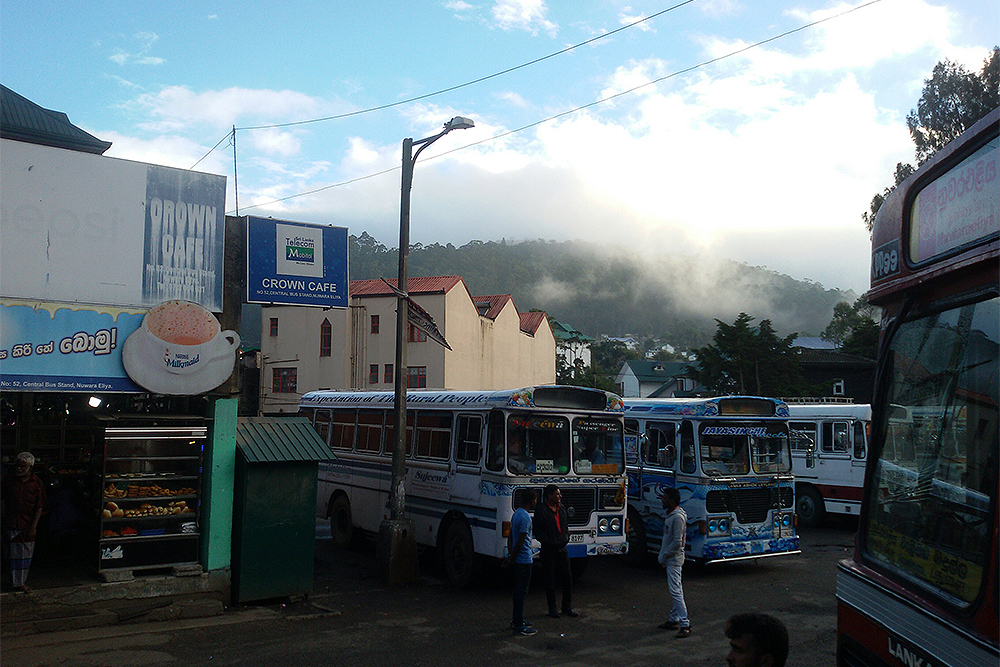
However, Nuwara Eliya lies – indirectly – on the iconic train route between Kandy and Ella. Indirectly since the train station actually is in Nona Oya, 8 kilometers away.
There are, of course, buses connecting these two towns, but as you arrive with your luggage, you might want to take a tuk-tuk, it is about 400 to 500 LKR.
Between Nuwara Eliya and Haputale is a frequent bus service available; reliable and cheap, yes, but also crazy and scary. The drivers are ruthless, driving the sharp curves of the serpentines like there’s no tomorrow.
The Obligatory Sri Lankan Train Ride
This was one reason why for the way back from Haputale to Nuwara Eliya, I rather opted for the train. Plus, it promised to be one of these old, local trains with all the windows and doors open. I was finally able to take a Sri Lankan train-picture. I think they don’t let you leave the country without one of these shots.
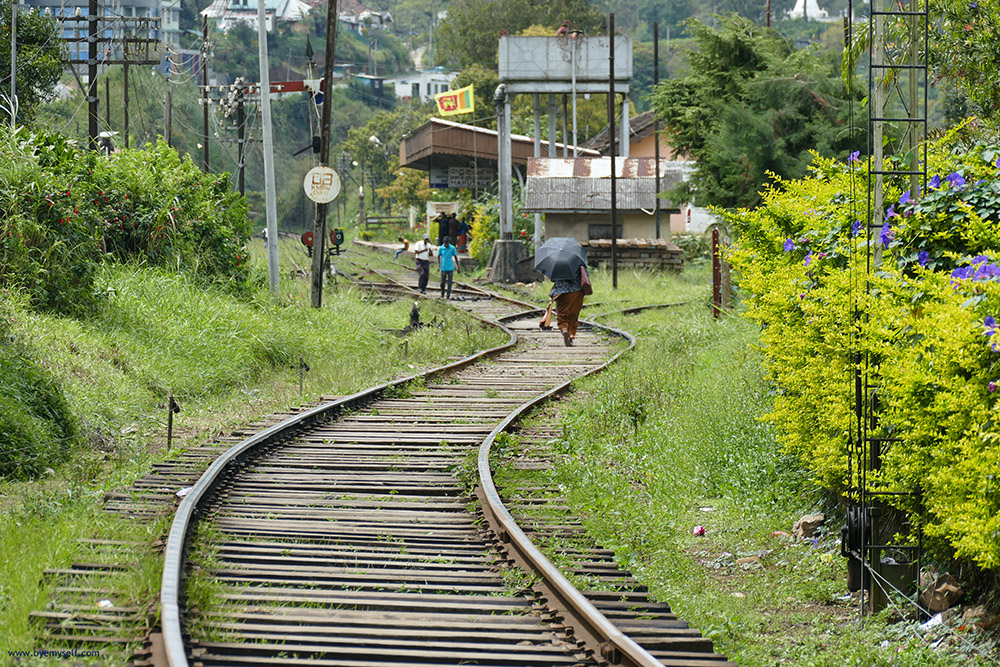
Actually, it turned out to be a smart decision since, as I pointed out before, the train between Kandy and Ella is permanently booked out. The fact that they still keep selling tickets makes the trip uncomfortable for everybody – for those with as well as for those without reservation.
The train I took from Haputale was half empty – second as well as third class. Besides two Chinese ladies, I was the only tourist on this very smooth ride.
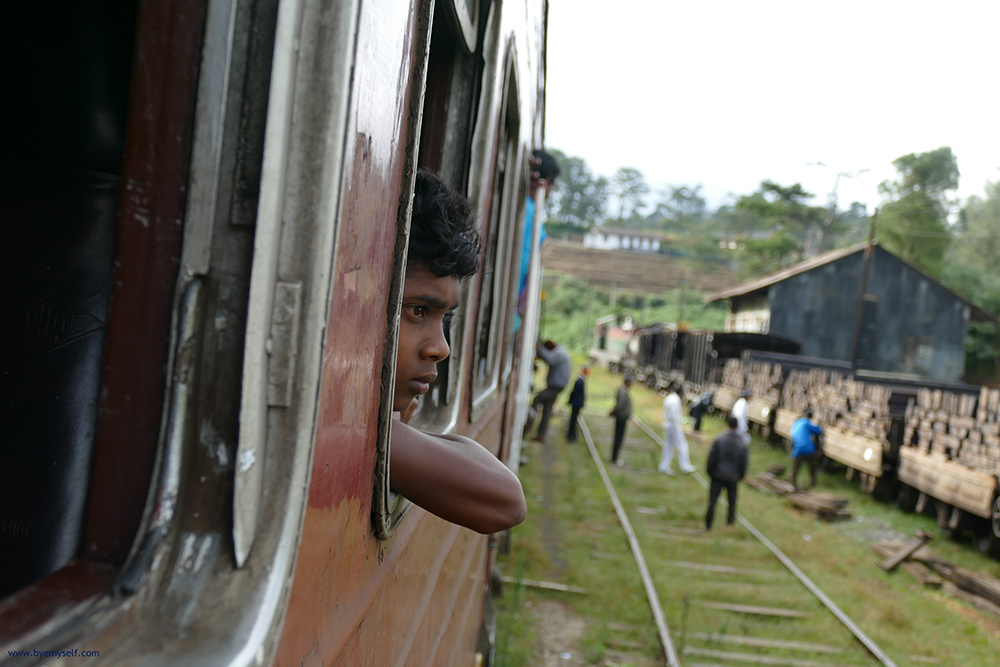
Yes, you don’t get to see the famous Nine Arch Bridge. Nevertheless, you are crossing the velvety tea plantations and pastures on rolling hills. It’s just beautiful and a great alternative to the crazily packed real train.
Best Place to Sleep
In Nuwara Eliya, I felt very comfortable at JJ Homestay. And the terrible weather didn’t make it easy to feel very comfortable. All the credit goes to JJ’s highly sophisticated, yet kind and fun family – especially their hilarious little son.
The homestay is located right in the middle of Nuwara Eliya. From there, it’s ten minutes to the commercial town center and ten minutes to the residential area in the east.
Get more details, check out availability and JJ home stay’s rates. *
If you are searching for other convenient lodging options, you can do so on this map*:
Booking.comHere you can search for lodging options in Haputale in case you plan to spend the night there*:
Booking.comBest Places to Eat
Like at other homestays and guest houses, the hosts are willing to make you breakfast and lunch or dinner. This is a great service – especially when it rains.
Downtown, I liked two places in particular:
Ambaal’s Vegetarian Hotel on New Bazaar Road where you get good South Indian vegetarian cuisine at a great price; plus the service is fun and friendly.
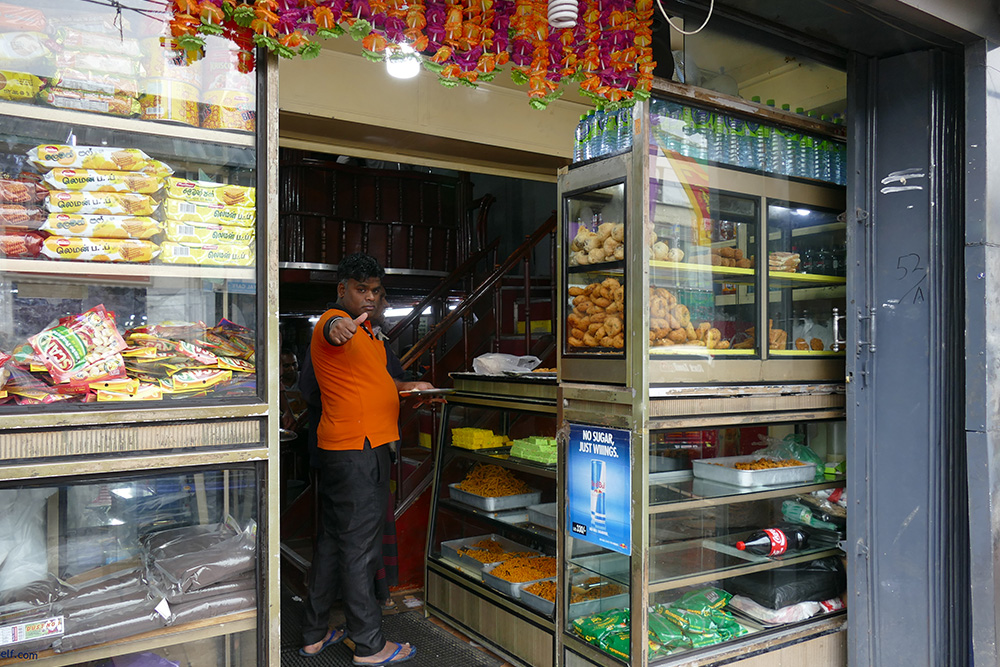
The other is Remarko, as well on New Bazaar Road, right across from the central bus station. Here you don’t get only a small choice of good, fresh daily specials. They also have a wide variety of hearty pastries filled with veggies or chicken or sausage….you name it. And once you’re there, try one of their incredibly good cakes, too.
What to See
I’m an avid solo-travelling woman. Since solo travel doesn’t equal solitude, I love to join organized tours here and there. They allow me to meet fellow travellers – for just a short moment or a lifelong friendship.
Therefore, here are some great ideas of what to do and which tours to join during your stay in Sri Lanka*:
Do you want to read about all the other beautiful places I’ve visited in Sri Lanka? Then go to the main post and take your pick! There you’ll also find valuable general information that will make your trip smoother.
Pinnable Pictures
If you choose to pin this post, please use one of these pictures:
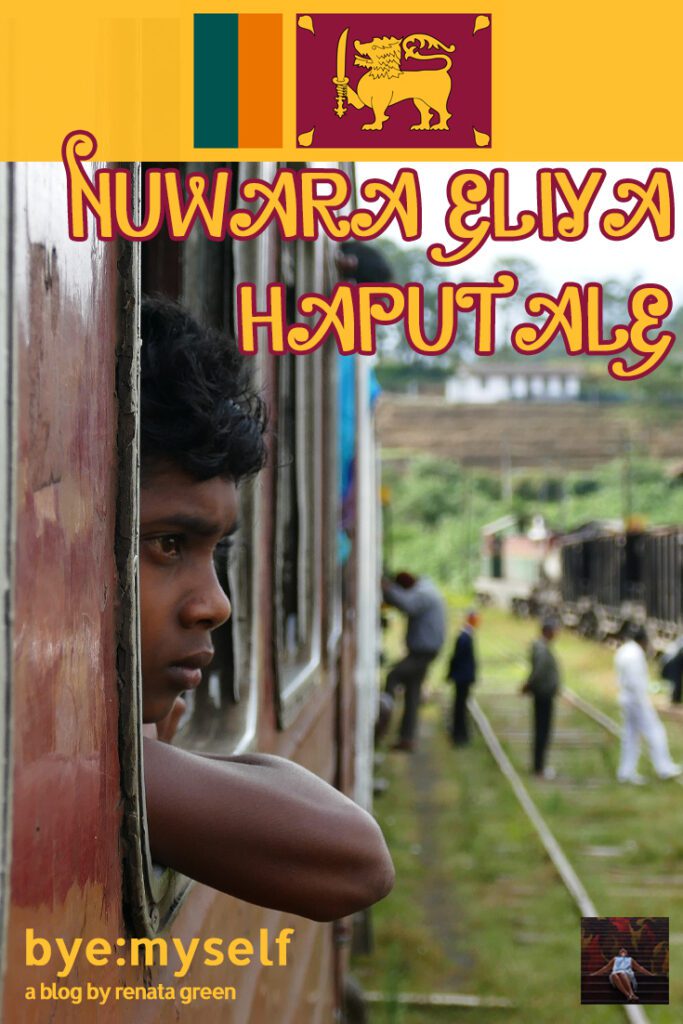
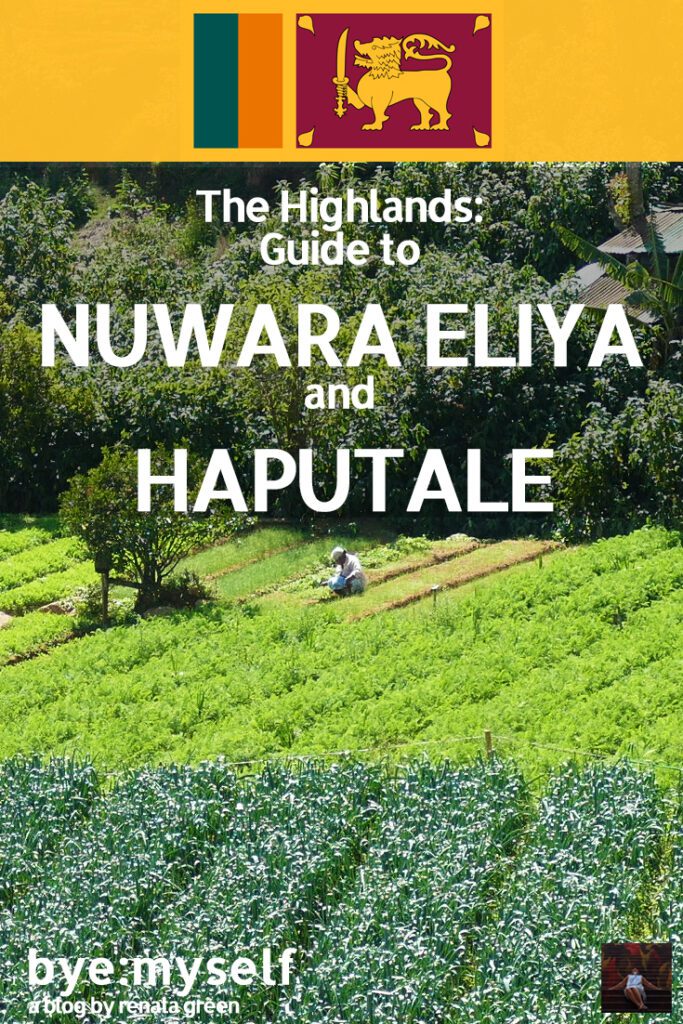
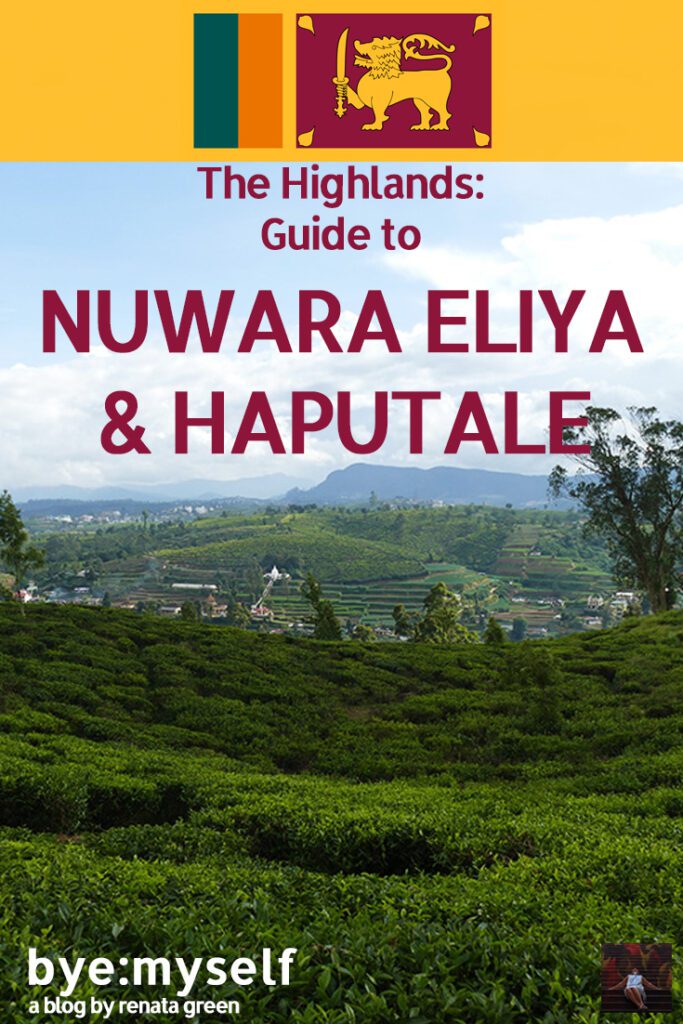
Note: I’m completing, editing, and updating this post regularly – last in January 2023.
Did You Enjoy This Post? Then You Might Like Also These:
MIRISSA – Beach Hopping
Guide to the Most Amazing Places in SRI LANKA
Guide to KANDY and a Temple Hike from Embekke to Pilimathalawa
Guide to POLONNARUWA, the ancient capital of Sri Lanka
Guide to UDAWALAWE – on a Peaceful Safari
i am not a dark tourist, the world is a somber place
Guide to ANURADHAPURA and MIHINTALE
Travelling by Bus Around the World or Ride with the Devil
* This is an affiliate link. If you book through this page, not only do you get the best deal. I also get a small commission that helps me run this blog. Thank you so much for supporting me!

